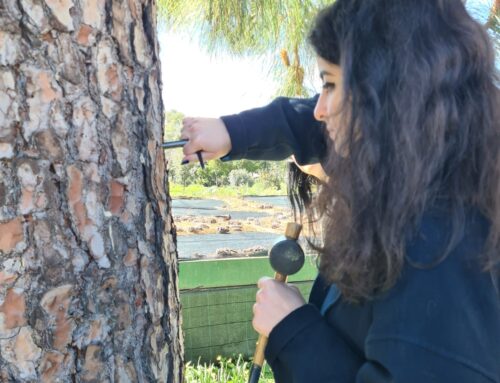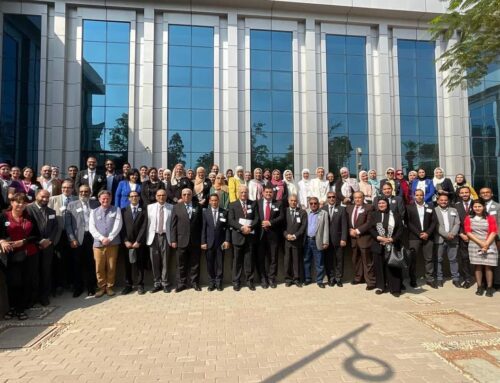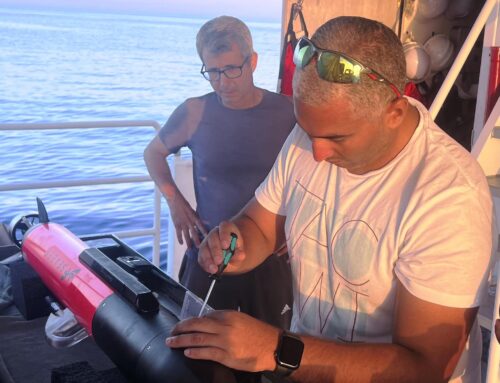Azza Moustafa- Punta Prima Research Project- November 2023

The initial plan for the fieldwork was for the Warsaw students, their instructor, and the IBEAM team to dive every five days from 8:30 am to 2:00 pm to uncover the shipwreck, followed by theoretical lessons in the afternoon. Subsequently, I would dive three times with Dr. Domínguez Delmás – twice to inspect the shipwreck and assess the archaeologists’ progress, and once to collect samples for dendrochronological analysis. However, due to adverse weather conditions, the original plan had to be adjusted.
The archaeologists were only able to work on the wreck site one afternoon, setting up the quadrants, and one morning cleaning up the wreck. As a result, only a small portion of the wreck was exposed, and we were unable to collect timber samples as they could not be properly documented. Despite these setbacks, we endeavored to make the most of the situation. I joined the Warsaw students on a prospective dive in a secluded bay, where diving was still safe despite the windy conditions, to investigate a recently reported wreck site. I also attended the theoretical classes, and while we had to finish one day earlier than planned, the overall experience was still rewarding.
Despite the challenges posed by the weather and the subsequent adjustments to the fieldwork schedule, I was able to gain valuable experience during my time as a trainee on the Punta Prima Project. I had the opportunity to dive on the wreck site and inspect the seven exposed timbers underwater, providing me with firsthand insights into the appearance and condition of the shipwreck. Additionally, I participated in a prospective dive on a newly reported shipwreck, where we discovered an anchor buried beneath layers of seagrass.




